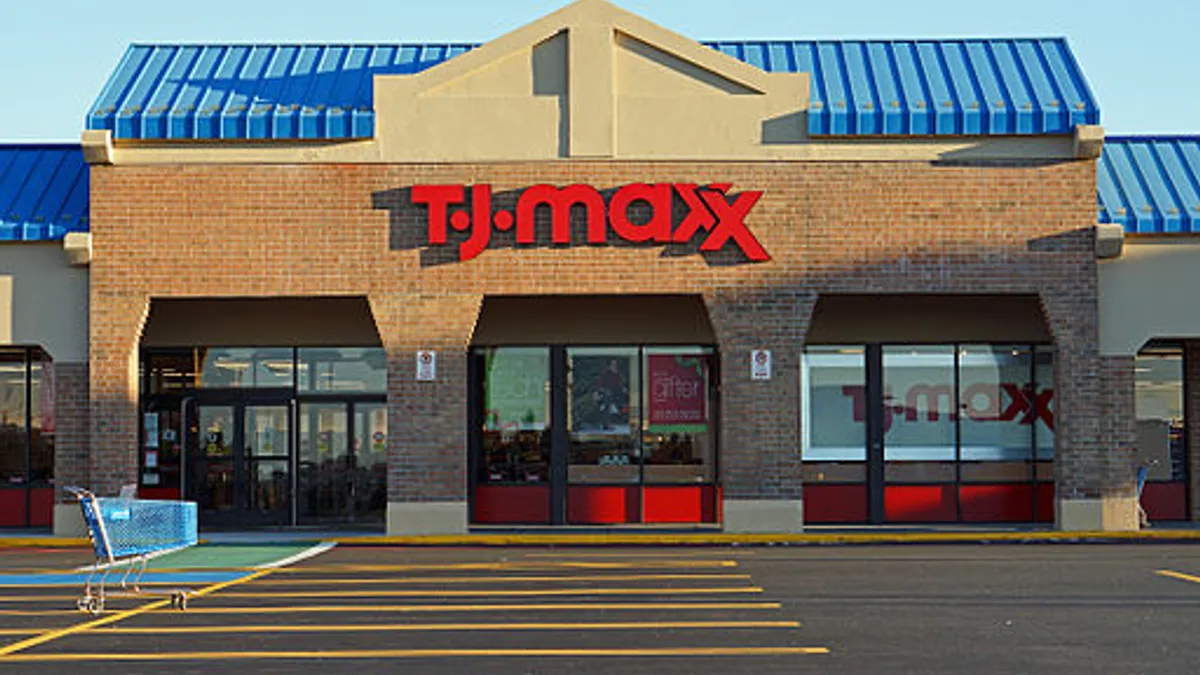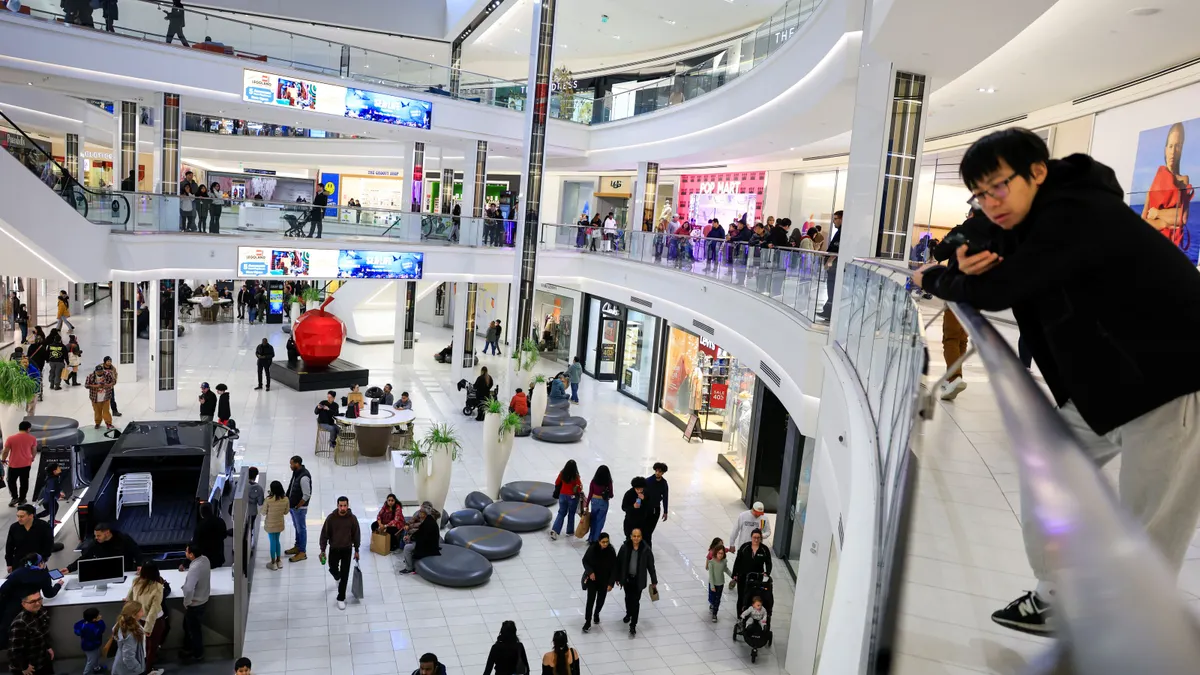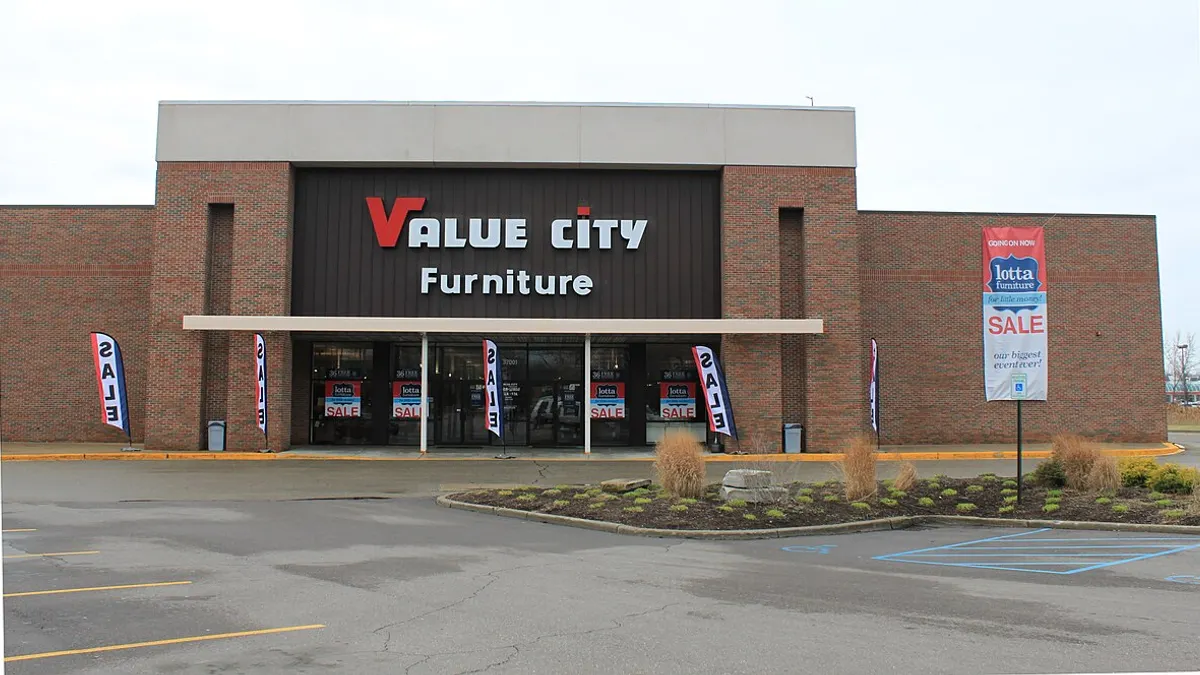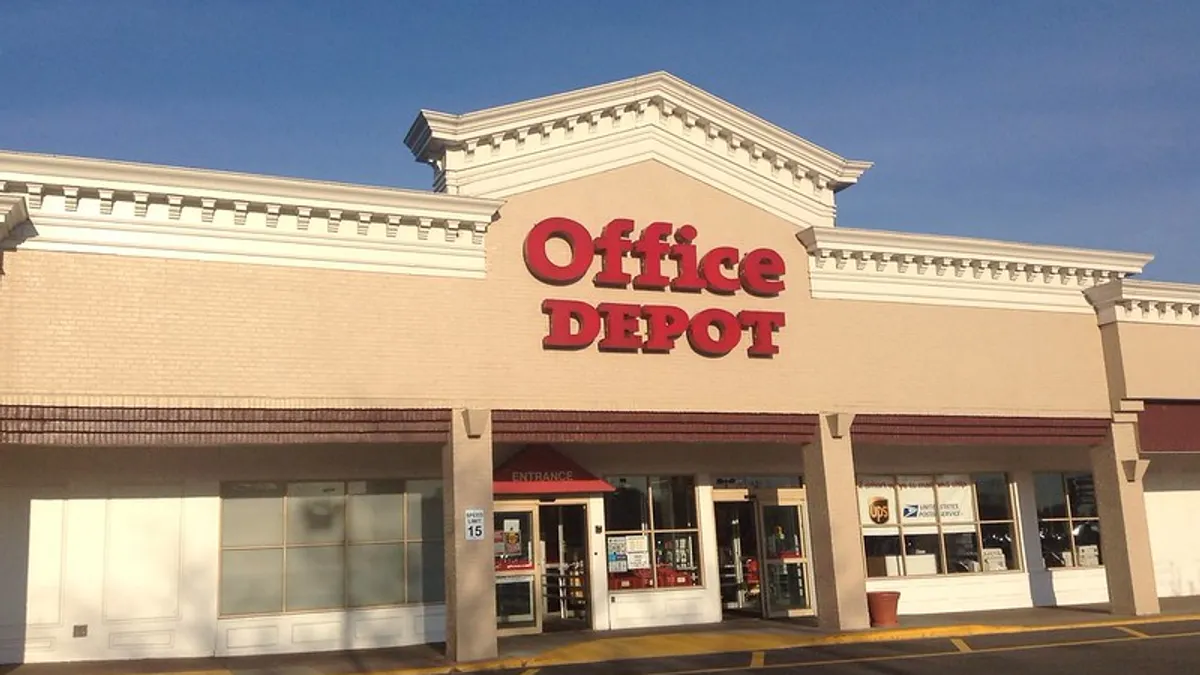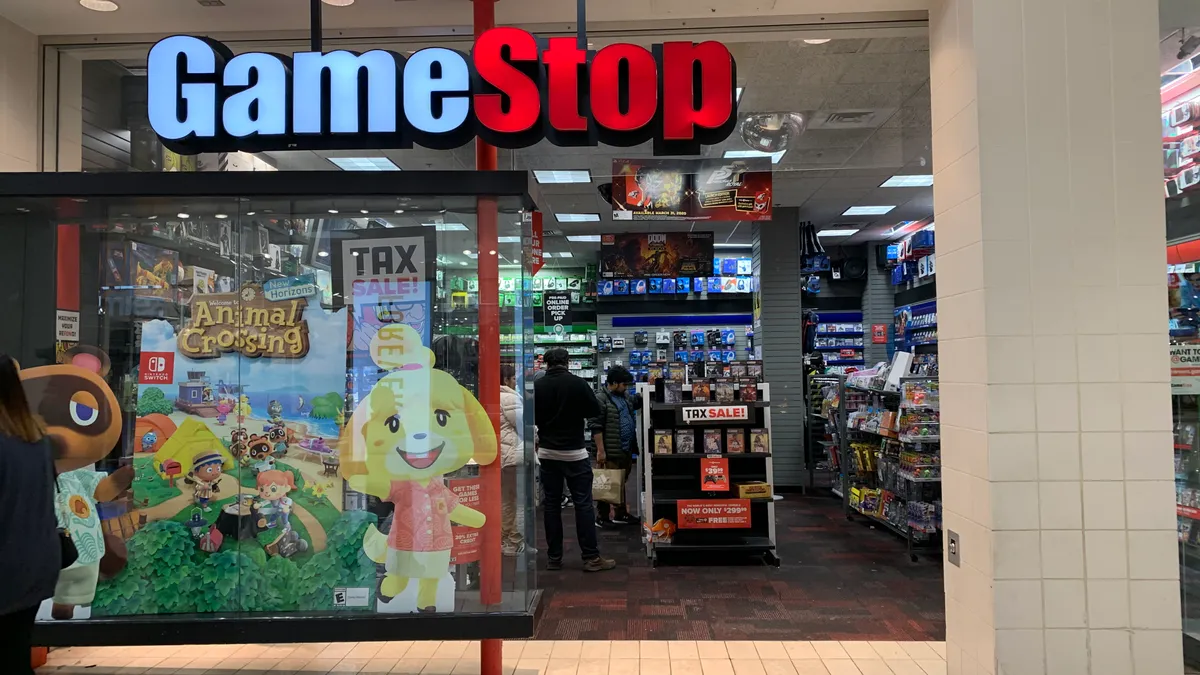Off-price retail is nearly as old as the department store that spawned it — it was Edward Filene, son of the Boston department store magnate, who thought of selling excess inventory at bargain prices in the basement of the downtown store. A little later, Frieda Loehmann collected garment overruns from top labels and sold them at deep discounts from her Brooklyn apartment, establishing the earliest version of that beloved American store.
Eventually, most department stores had their "bargain basements," and factories held their own special sales of defective, over-produced or canceled orders. But other enterprising retailers joined Loehmann over the years in selling such items in addition to seconds, close-outs, returns and last season’s leftovers from other apparel and footwear companies.
For shoppers, it meant an opportunity to grab top labels at basement prices, and that remains an essential lure to the likes of Ross, TJX Cos.' Marshall's and TJ Maxx, Nordstrom Rack and Macy’s new Backstage effort, which the company hopes will be its growth concept. (The originators, Filene's Basement and Loehmann's, have since folded.)
Thanks in part to solid fundamentals like a robust merchandise pipeline, a healthy consumer base and plenty of runway for brick-and-mortar expansion, the segment is on pace to reach $18 billion to $19 billion of incremental sales by 2021, according to a September note on the sector from JPMorgan analysts. Around the same time, Moody's Investors Service released a note saying much the same thing, crediting the retailers' significant scale, flexible purchasing, strong and expanding vendor relations and adaptable real estate strategies, for their endurance.
But does a century-old retail concept, in the age of instantaneous price-checking, the rise of e-commerce and a glut of apparel sellers, really have staying power?
In this economy?
The off-price retail model is stunningly durable — it's fed when the economy is poor and budgets are tight, but still thrives in a healthy market, like right now.
"The value genie has left the bottle. All the hoping and wishing isn’t going to get it back in."

Ray Hartjen
Marketing Director, RetailNext
"Thanks to tax cuts, bonuses and refunds, most consumers saw their finances improve over the first quarter. This includes more constrained households," GlobalData Retail Managing Director Neil Saunders said in comments emailed to Retail Dive. "However, this fillip to income did not change the value mindset. Our data shows that even those with rising incomes remain value-conscious and are keen to make their dollars stretch as far as they can."
In other words, "The value genie has left the bottle," according to RetailNext marketing director Ray Hartjen. "All the hoping and wishing isn’t going to get it back in. There will always be demand for value, even in periods of a fast-growing economy, simply because younger shopping generations would rather travel and collect experiences than pay unnecessarily high costs for material 'things.'"
And these stores deliver. TJX and Ross are driving foot traffic with pricing 20% to 60% below both Amazon and full-line department stores, according to a report by JPMorgan. That growth comes primarily at the expense of department stores, which combined, have lost $25 billion in sales since 2011, and are on pace to lose another $22 billion sales over the next five years, note analysts.
Department stores, then, are serving off-price retailers in two ways: they're both a source of merchandise and of customers.
"Off-price retailers continue to outperform other sectors of the U.S. retail industry largely because they offer the kind of lower-cost, higher-value products and shopping experience many consumers are looking for," Moody’s analyst Christina Boni said in an October note. "Off-price stores are far outstripping department stores, which in contrast are still struggling with outmoded formats and supply chains that can’t keep pace with customer demand."
The supply side
While demand for off-price abides, that isn't quite as true for the supply. That's due in part, said Columbia University Business School retail studies professor Mark Cohen, to the collapse of department stores.
Brands and other retailers will continue to provide merchandise to off-pricers. But without the department store to provide the benchmark, "off-price" will begin to become meaningless. "Supply may become an issue because the engine of legitimacy, principally the department store is disappearing," Cohen told Retail Dive in an email. "There isn’t going to be a shortage of merchandise any time soon, but there may be a problem establishing and representing 'regular prices' that off-price feeds off of."
That's true for brands, too, experts say. While off-price outlets have been a handy way to unload unsold or unwanted merchandise, some are fretting that the lower prices and jumbled merchandise take a toll on their brands. In fact, pulling back on off-price sales and discounts was the foundation of Coach's recent comeback.
"If you put any brand up on the witness stand so to speak, they’ll probably tell you that they’re not a huge fan of off-price because they’re putting up product and getting fewer dollars," Danny Essner, senior vice president of marketing at wholesale platform NuOrder told Retail Dive in an interview. "But it’s something that’s here, that's important and has increasing influence. The brands have realized that it’s not something that they can just ignore. The attitude is, 'If we can’t beat em join em — but do it on our terms.'"
"Supply may become an issue because the engine of legitimacy, principally the department store is disappearing. There isn’t going to be a shortage of merchandise any time soon, but there may be a problem establishing and representing 'regular prices' that off-price feeds off of."

Mark Cohen
Professor of Retail Studies, Columbia University
Those terms include developing cheaper product lines destined only for the off-price channel. The hope is that younger consumers will opt to shell out bigger money in flagship stores for the real thing once they reach their higher-spending years, Essner says.
That's undermining the appeal of the channel for more luxury brands, Columbia's Cohen says. "For the mono brands like Ralph Lauren, Coach, Michael Kors, etc., off-price, with its attendant volume appeal and profitability, has been the drug they’ve become addicted to," he said. "[But] they are all trying to wean themselves off of it since it quite clearly has harmed their brands' equity."
That leaves more goods of lesser quality, which often irritates treasure hunters, for whom the whole point is to find an authentic, first-run designer bag, dress or shirt for a steal.
A high price for department stores
Off-price began as a solution to a problem for department stores, and they've developed a symbiotic relationship since. Nordstrom has kept things in house since 1975, when it opened its first Rack store, but has expanded that fleet in recent years to the point where now the off-price operation is the "engine" of its business, according to analysts at GlobalData Retail.
"Department store off-price has certainly provided a viable competitor to traditional off-price," Marshal Cohen, chief industry advisor of retail at The NPD Group, told Retail Dive in an email. "Both from a supplier perspective as well as a model for the shoppers seeking everyday value. What has happened is two-fold: These new off-price models are pulling the traditional off-price consumers, but they have also drawn in the traditional department store shopper, now offering the value equation at their store off-shoot."
"Between more players with the department store off-price off-shoots entering the off-price game, and online retailing continuing to erode the landscape, off-price is maturing out."

Marshal Cohen
Chief Industry Advisor, The NPD Group
That finally become too tempting for Macy's, which just three years ago launched its off-price unit, Backstage. Last month Macy's said 100 of the outlets will open this year and there are plans to add a distribution center. But Nordstrom and Macy's are both setting themselves up for cannibalization by that business, warns Columbia's Mark Cohen. "Nordstrom created The Rack years ago to cater to a younger less affluent customer in the belief that once they got a little older and more affluent they would trade themselves up into the Nordstrom store," he said. "It isn’t happening. The Rack’s business continues to grow while the Nordstrom store isn’t growing appreciably at all."
The space is getting crowded, said NPD's Cohen. "Between more players with the department store off-price off-shoots entering the off-price game, and online retailing continuing to erode the landscape, off-price is maturing out."
'The last of the online holdouts'
So far, most off-price retailers have given digital sales short shrift — indeed, NPD's Cohen calls them "the last of the online holdouts." For one thing, the discovery-based treasure hunt seems predicated on going to the store.
"I do think these stores offer something in the physical environment that is difficult to imitate online," Barbara E. Kahn, professor of marketing at The Wharton School, said in an email. "I think the idea of the 'treasure hunt' – and finding something special amongst the racks in a physical store is a compelling shopping experience for some people. The physical in-store experience is definitely part of the allure."
"Millennials really care about brands — they love brands, as most young generations do. But they fall out of love really quickly. "The love of brand choice and the bargain hunting ethos puts off-price stores in a sweet spot right now."

Matt Sargent
Senior Vice President of Retail, Magid
Plus they're doing pretty well without it, including with younger consumers. Indeed, while many see millennials as less brand-loyal and therefore less easily seduced by good deals on premium labels, that's a misinterpretation, according to Matt Sargent, senior vice president of retail at consulting firm Magid. While older generations grew up with binary choices for their loyalties — Coke/Pepsi, Colgate/Crest, Skippy/Jif — millennials are offered a wide array.
"Millennials really care about brands — they love brands, as most young generations do. But they fall out of love really quickly," Sargent said in an interview. "The love of brand choice and the bargain hunting ethos puts off-price stores in a sweet spot right now."
With rising traffic and sales at stores, it's hard to argue that off-price retailers should invest much in their online channel. "Do you spend money on a theoretical when you doing so well right now?" Sargent said.
Still, NPD's Cohen believes they will have to revisit that stance. "Online does provide an entry point for many new consumers to become aware of the products," he said. "The challenge is the model of selling close-outs are hard to manage online compared to planned purchases. But, keep in mind, more and more of off-price shopping is now planned."
Hudson's Bay Co. threw in the towel in the online off-price space, last week selling off its Gilt Groupe flash sale site to rival Rue La La, whose CEO, Mark McWeeny, says the model is "all about discovery. Certainly storytelling is core to what we do. It's great storytelling and great use of data and analytics," he told Retail Dive of the opportunity for off-price sales online. "I'll never say never, but the opportunity is just so large in e-commerce. Brick and mortar is not our current focus."
But the jumble, the increasingly dubious merchandising from designers and the "compare to" pricing that often inflates the worth of an off-price deal may not fly so easily online, and that could be a bigger e-commerce challenge for these retailers, according to Sargent. The level of detail about products and the plentiful reviews don't compare to the transparency found at Amazon, for example.
"Off-price has brands you want at less than you expect, that’s both the sweet spot and the threat," he said. "I think there’s more opportunity for them if they were to engage more extensively online. Amazon has created this really strong social engine and community — that creates a huge amount of good will. People trust them, they know who they are, they know what they stand for — they stand for unbiased choice and they offer the transparency to validate that. Once you go in the digital space, you become transparent. If you own that and do it as well as Amazon, it can be a great asset."
While NPD's Cohen sees the space getting maxed out, Columbia's Cohen, sees no end in sight for off-price retail, at least not for the companies like TJX, Ross and Burlington that are consistently called out by analysts as solid and growing. Department stores' efforts however, could be a different story.
"I don’t think anything but carelessness is going to stop TJX or Ross, and there is no sign on the horizon that they are going to get careless," he said. "As for Macys, Saks, Nordstrom, Neiman Marcus, etc. I don’t think there is going to be any happy endings."



